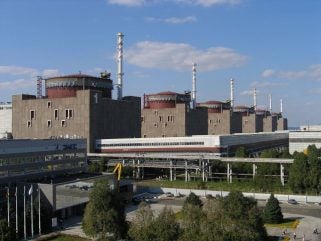
Experts from the International Atomic Energy Agency (IAEA) stationed at the Zaporizhia NPP (ZNPP) are reporting daily military activity in the vicinity, with some explosions occurring close to the facility. This ongoing situation underscores the persistent threat faced by the plant, which remains at the heart of an active war zone, IAEA Director General Rafael Mariano Grossi said.
No damage has been reported to the plant within the past week, and the IAEA team at the site has focussed its efforts on assessing the condition of the plant, as well as ongoing maintenance and training activities.
The IAEA team conducted regular walkdowns across the ZNPP. At the pumping station of unit 4, the team confirmed that the circulation pump used to maintain the flow of cooling water between the ZNPP discharge and intake channels is still operational. Its operation is dependent on the overall water level in the ZNPP cooling pond, which has been steadily decreasing since the destruction of the Kakhovka dam in June 2023.
In assessing maintenance at the plant, the IAEA team noted during a visit this week to cooling tower 1, damaged by fire in August, that no maintenance activities were ongoing. The ZNPP informed the IAEA that it plans to use the support of external contractors to determine the extent of the damage.
The team was informed that two of the six mobile diesel generators, introduced following the Fukushima stress tests, that are available on site, were moved to other locations. One was now being used at the recently damaged Zaria substation and one at the pumping water supply station in the city of Energodar.
The IAEA team was updated on ZNPP staffing numbers. Of the nearly 5,000 ZNPP employees, 130 work at the training centre, including 70 instructors. The goal is to expand the personnel to 6,000.
The team performed radiation monitoring measurements on site and in the nearby city of Energodar, confirming that radiation levels were normal.






